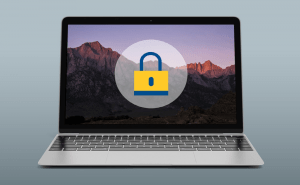 Data Recovery Techniques For Beginners
Data Recovery Techniques For Beginners
Recovering lost or deleted files can seem to be a complicated process, but it's actually not. Don't get me wrong, if you wouldn't have the right tools to help you out it would be a very tedious task, but since that's not the case, all you need to do is to click a few buttons.
Let's take one step at a time and explain a few terms that you should understand before venturing any forward.
- When is file recovery necessary? - There are times when certain files that you actually require get accidentally deleted from your computer. Another example of a situation requiring file recovery is a system failure caused by a power outage or a Windows error which causes certain files to disappear.
- Why is file recovery possible? - When it comes to computers, there is data which is shown to you by the software and the data that exists in the hardware components. You don't actually see the latter one. Even though your software can no longer display the data after it is deleted, that doesn't mean that it doesn't physically remain on your storage device. The simplest explanation I can give you is that when you delete a file, your computer only removes the address where the file is found from its index. The information itself will exist until the exact sector where it is stored gets overwritten with a new file. So, the sooner you try to recover a certain file, the higher the chances that it hasn't yet been overwritten.
- What are file recovery programs? - Data recovery tools are computer programs that enable you to get back the files that you lost. These applications scan a specified part of your HDD (a folder, a drive or even the entire disk) or other storage devices and identify the files which no longer have an address in the index of your operating system. All you have to do is to select the ones that you want to be restored and the program will try to recover them for you. The one thing to remember is that there are no actual guarantees for success. The quality of the application and physical and logical errors on your hard disk can keep you from getting back the file that you need.
- Can all files be recovered? - Theoretically, unless the HDD is completely physically destroyed any data can be salvaged. In reality, however, you can make sure that the data you chose to discard can no longer be retrieved without having to take extreme measures such as setting your hard drive on fire. In order to do so, you need specialized software that will repeatedly write over the disk sector where your deleted file has been kept to make it as hard to recover as possible. This process is called secure deletion or file shredding.
Now that we've covered the basics, I will show you a few tools that will help you out when it comes to file recovery and secure deletion. I chose these tools based on my personal experience with them and I made sure that they have a free version which you can use.
Recuva Data Recovery
Recuva Data Recovery is very efficient and will recover most of the files that you need. The application offers an advanced mode, a deep scan feature, and lets you preview the files before restoring them. Even better, its interface is very friendly, so you can easily figure out what to do right from the first time your run the application. Recuva Data Recovery has a wizard-like interface that you can't go wrong with. In order to get started you will have to select the type of file that you want to recover (document, video, archive, etc.) and choose the location where the files were before deletion. The application will then scan the specified area and give you a list with all the files that match your query. The colored circle in front of each entry shows you the file's availability (green being "a piece of cake" and red being "a long shot"). Check the boxes in front of the files that you want to get back, click on the Recover button (lower right corner) and the data will quickly appear at the location that you chose.
Glary Undelete
Glary Undelete is a completely free tool which is also very effective. It offers less features than Recuva and it lacks the wizard style interface, but it's still a straightforward application that gets the job done. To use this application you have to select the drive that you want to scan (you can't choose folders or specific locations), select the filtering options and then have the program perform the scan. Once the list of matching entries is complete, you can easily check the ones that you want (file previewing is possible) and then press the Restore button.
Eraser
I couldn't tell you how to recover delete files without showing you how to make sure that certain files can no longer be recovered. Eraser is a free application that is perfect for this task. It offers several shredding methods so you can choose the one that you are the most comfortable with and many features designed to make the tool as convenient as possible. You will be able to schedule tasks, use the available shredding algorithms for all the free space on your hard disk and even place specific files over the ones that you deleted to ensure plausible deniability. Using this tool is very easy: all you have to do is to create a new text by right clicking the program's main window and selecting the respective option. Then click on the Add Data button, choose the deletion method, and select the files or folder which you want to shred. When choosing the shredding method, the rule of thumb is that the more passes an algorithm has, the more time it takes to complete, and the safer it is. In case this is going to be a repetitive task you can give it a name and save it for later execution. Once you've chosen the desired settings and you are absolutely sure that you want that data permanently gone, right click on the respective task and press the Run Now button.






